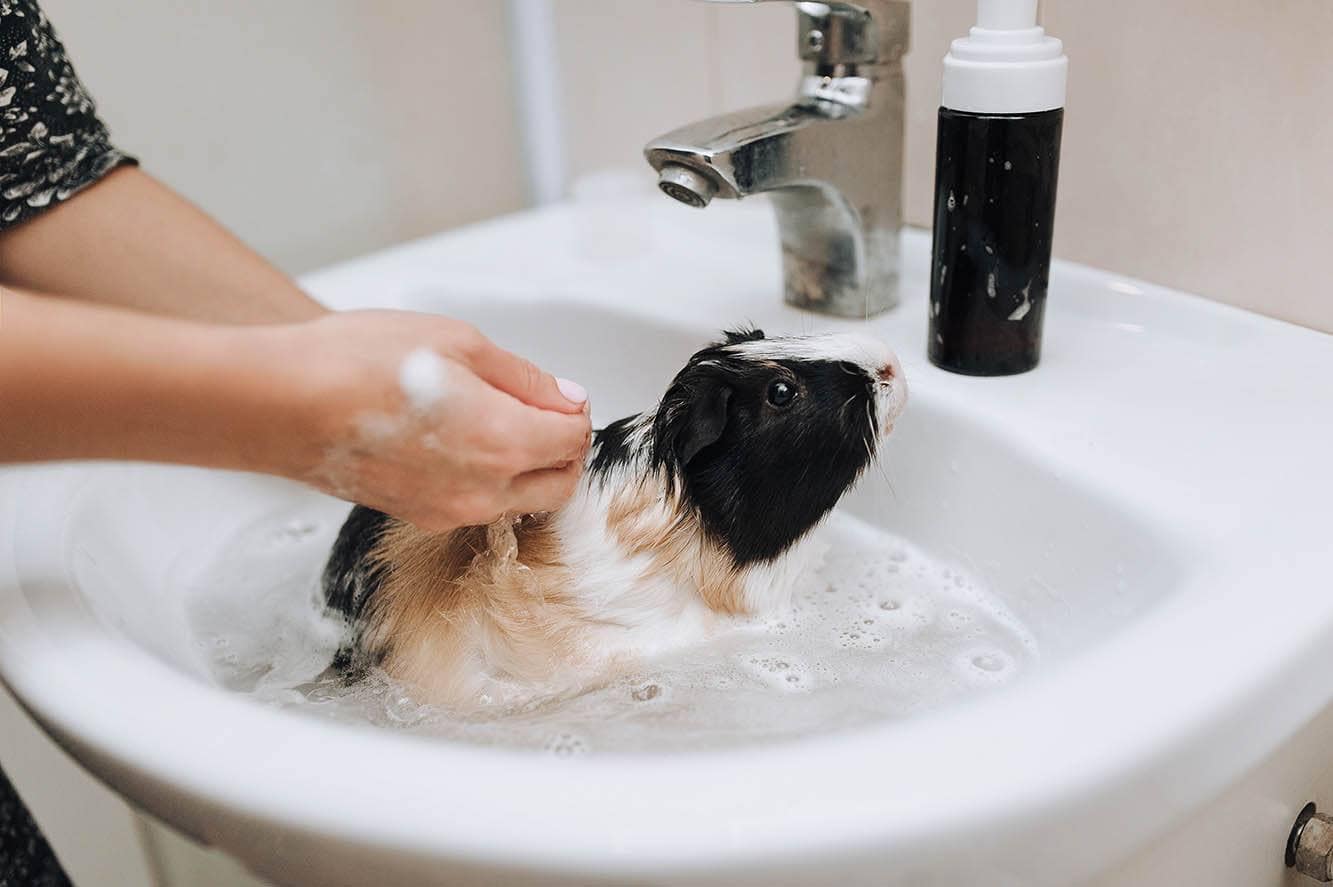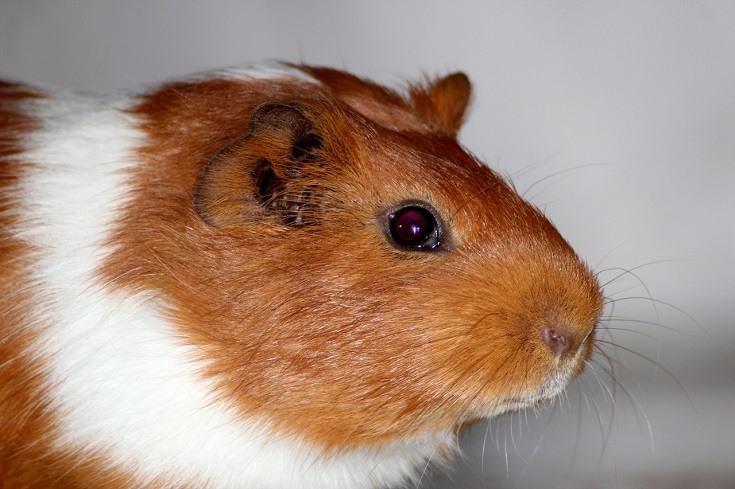
Click to Skip Ahead
It’s always fascinating to learn more about our pets, especially how they see the world compared to humans. For example, we know that dogs can see certain colors, but there are many colors that we see that other animals can’t. So, what about guinea pigs? Can they see color? As a general answer, Guinea pigs are dichromats, meaning they can see two main colors: shades of blue and green.
Keep reading to find out more interesting facts about guinea pigs’ vision facts!
What Colors Can Guinea Pigs See?
Rodents, including guinea pigs, have a unique visual system that is quite different from humans. Guinea pigs are dichromats, meaning they can see two main colors: shades of blue and green. Based on current knowledge, they lack the ability to perceive red light, though a 2020 study has challenged the common myth that rats can’t see red light.1 This interesting experiment reminds us that science is constantly advancing, and what seems true today may be proven otherwise tomorrow!
The inability to perceive red light might seem like a disadvantage, but it’s a common characteristic among many animals and doesn’t hinder them in their natural habitats.
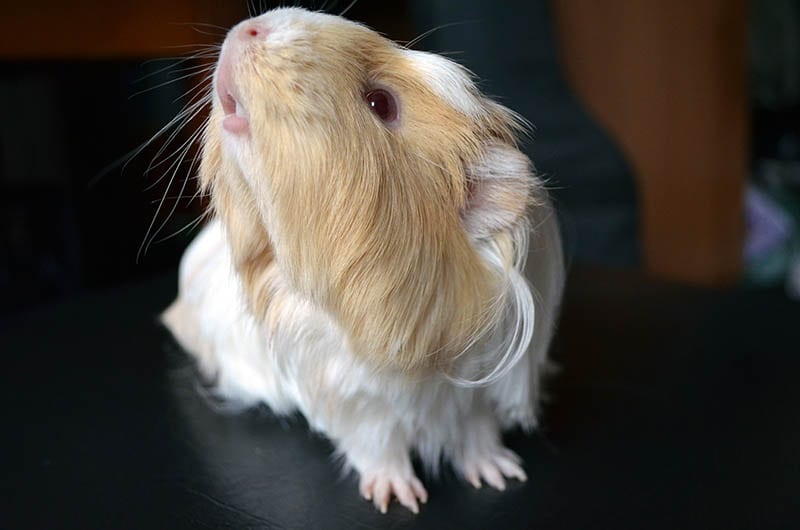
How Guinea Pigs See the World
Guinea pigs, while sharing many commonalities with other rodents, have some unique characteristics in their vision. They are crepuscular creatures, meaning they are most active during the twilight hours of dawn and dusk, leading to specific adaptations in their vision.
Let’s explore how vision develops in infant guinea pigs.
Birth to 2 Weeks
Unlike many animals, guinea pigs are precocial species, meaning they are born relatively mature and mobile. Newborn guinea pigs have their eyes open at birth, while eye-opening in rats takes place 2 weeks after birth. Their vision is probably not fully developed yet, though, so they primarily rely on their sense of smell and touch to navigate their environment and find their mother for feeding.
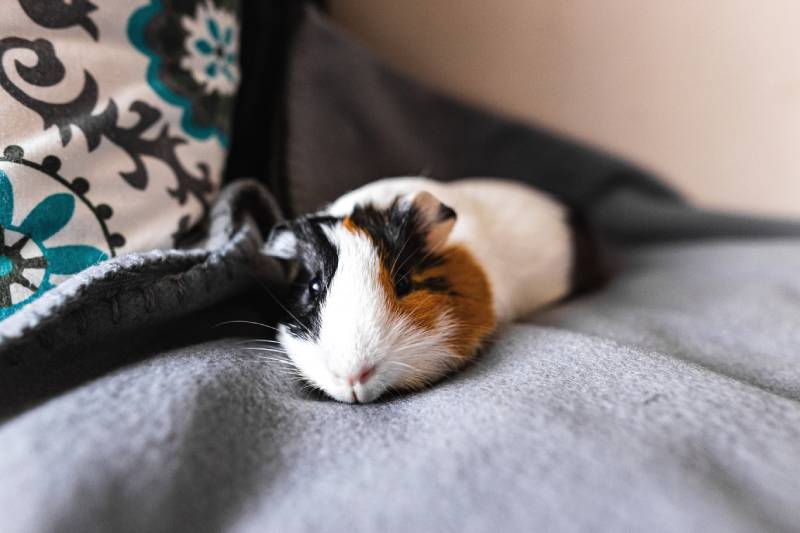
2 to 4 Weeks
As guinea pig pups grow, their vision and other senses continue to develop. By 2 weeks of age, they start to exhibit more precise control over their movements and begin to explore their surroundings more actively.
1 Month and Beyond
By the time they reach 1 to 2 months old, guinea pig pups’ vision is probably fully developed. They reach sexual maturity from 3 to 4 weeks of age. Guinea pigs are crepuscular and have great visual acuity in low-light conditions. It’s important to note that while guinea pigs are, like us, born with open eyes, their vision is not comparable to human vision. Due to their laterally placed eyes, they have a wide field of view that’s beneficial for spotting predators but has limited depth perception and lower visual acuity in general. This is why guinea pigs often rely on their other senses, such as hearing and touch, to interact with their environment.
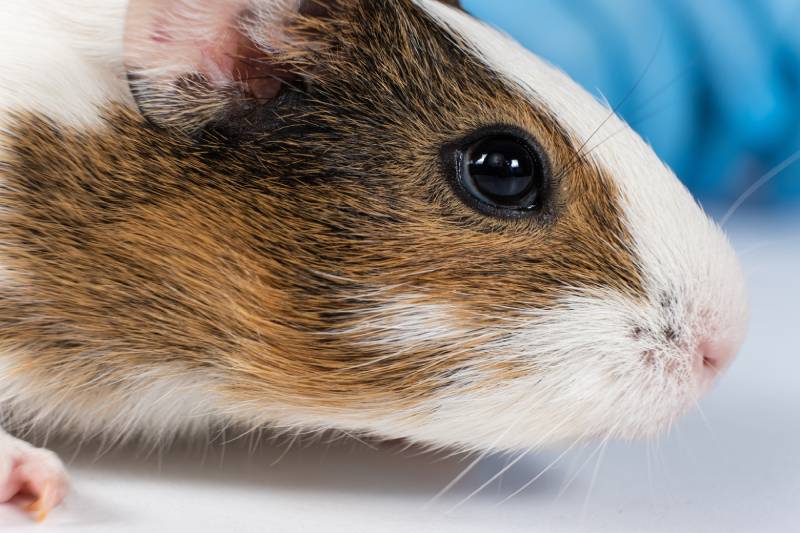
The Science Behind Their Sight
The eyes of a guinea pig are located on the sides of their head, providing a wide field of view. This positioning is beneficial for spotting predators but results in limited depth perception. Photoreceptor cells in a guinea pig’s eye include rods and cones. Rods are responsible for low-light vision, while cones are responsible for color perception.
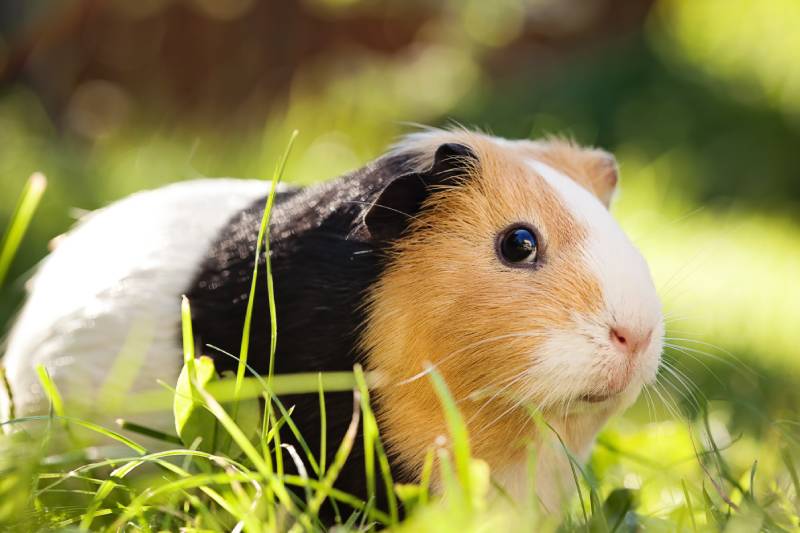
Daylight, Twilight, and Night Vision
As crepuscular animals, guinea pigs are most active during dawn and dusk. Their eyes are adapted to perform well under these low-light conditions, with a high number of rod photoreceptor cells that help detect movement and enable vision in low-light conditions.
In low-light conditions, guinea pigs rely more on detecting movement than discerning details. This sensitivity to movement helps them avoid potential threats and navigate their surroundings.
Vision Across Guinea Pig Breeds
Current research does not suggest any significant influence of breed on a guinea pig’s vision. However, individual health and environmental factors can impact their visual acuity. For example, long-haired guinea pigs might sometimes experience vision obstruction if their hair isn’t regularly groomed and kept away from the eyes.
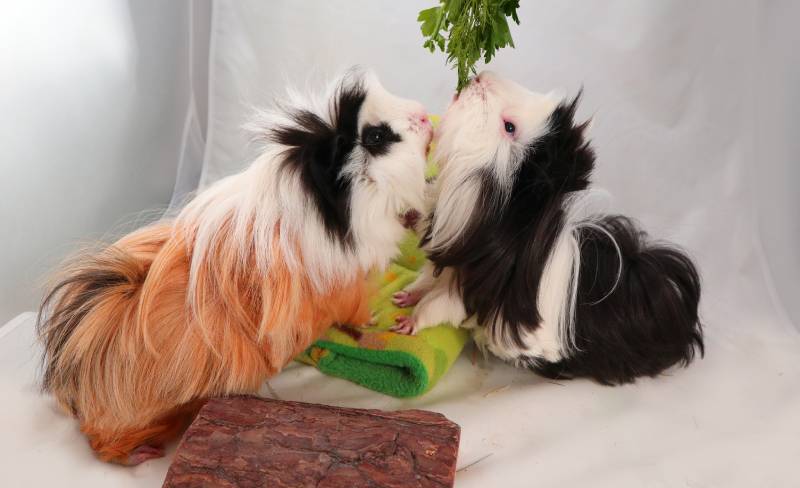
Maintaining Your Guinea Pig’s Eye Health
Routine vet visits are crucial for early detection of any possible eye problems. Regular professional health checks can ensure that your guinea pig’s eyes stay healthy. A balanced diet rich in vitamin C is essential for maintaining your guinea pig’s overall health, including eye health. Fresh fruits and vegetables are excellent sources of this vital nutrient.
Keeping your guinea pig’s habitat clean is vital for preventing eye infections. Dust, dirt, or bedding debris can cause irritation, wounds, or infection if they get into your pet’s eyes.
The Importance of Other Senses
Apart from vision, guinea pigs also rely heavily on their sharp hearing. It allows them to pick up sounds that may indicate danger, supplementing their visual information. Guinea pigs use their whiskers to sense their environment, especially in the dark. This tactile sense helps them understand the physical layout of their surroundings and avoid obstacles.
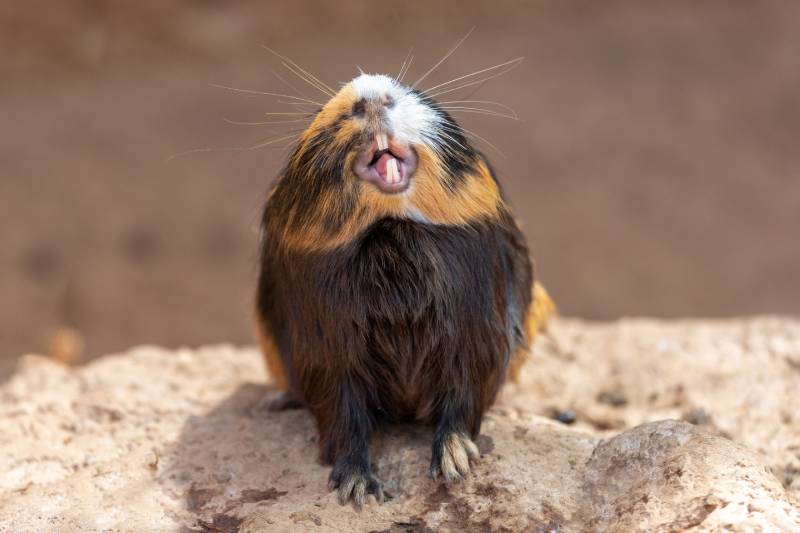
The Role of Other Senses in Defense
Guinea pigs, like many small animals, are often seen as defenseless due to their size and lack of traditional defensive mechanisms such as sharp teeth or claws. However, this does not mean they are entirely without means of protection.
While guinea pigs do not have external means of protection like some other animals, their primary defense strategy is avoidance. As prey animals, they have evolved to be highly alert and sensitive to changes in their environment. They are quick to retreat and hide at the first sign of danger. Their excellent hearing allows them to detect potential threats early on, and their social nature means they can alert each other to danger.
Moreover, guinea pigs are known to freeze when they sense danger. This behavior can serve as a defense mechanism, as staying still can sometimes prevent detection by predators. In situations where they cannot escape or hide, guinea pigs may also try to intimidate potential threats by making loud noises, showing their teeth, or even attempting to bite.
So, while guinea pigs may seem defenseless at first glance, they do have adaptations that can help them avoid or deter threats.
Conclusion: Appreciating Guinea Pigs’ Unique Vision
The unique visual system of guinea pigs, while different from ours, is perfectly suited to their needs and lifestyle. It offers specific evolutionary advantages, such as a wide field of view and heightened sensitivity to movement. Understanding the intricacies of guinea pig vision helps us create a safer and more comfortable environment for them. It allows us to appreciate the fascinating ways in which these adorable creatures perceive the world.
Featured Image Credit: Kassel95, Pixabay




